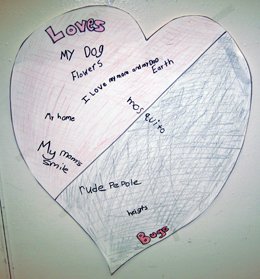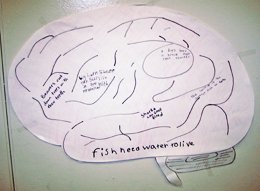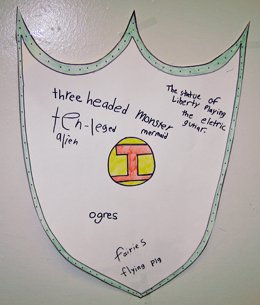A Classroom Canvas that Encourages Community
The smell of permanent marker is in the air; books are piled neatly on each desk; brand new posters and charts hang peacefully on the walls; pencils are sharpened to needle-like perfection. And in the distance, new sneakers beat the pavement with anxiety and excitement about the first day of school.
Ten years ago, I felt the same way. I wanted my room to look crisp and clean for my students. And it always did. But after many years of teaching, my store-bought decorations and props started to feel fake, a bit superficial. I wanted my room to be more kid created. I felt that if I let my students create the room, it would give me more of a chance to get to know them and for them to get to know each other, which lays a solid community foundation right from the start. Now, I begin each school year with a blank classroom canvas. The kids bring the color. The kids bring the creativity. The kids bring the heart and soul to the community. Super Duper Pow!
"Knowing the children we teach -- individually, culturally, and developmentally -- is as important as knowing the content we teach."
-- Responsive Classroom
Painting the Classroom Canvas
Jamie Schwantes, first grade teacher in West Deptford, N.J. (and good friend of mine), says that whatever he uses in the classroom, whether it's furniture or decorations, should always have three purposes. Well, here's a little activity I love to do in the beginning of the year that has three purposes. Mr. S would be proud. I call it "Mapping your Classroom Community."
- Purpose 1: Getting to know each other
- Purpose 2: Writing topics
- Purpose 3: Kid created decorations
A Map Can Take You On a Marvelous Journey
Students need to write about what they know. It puts them in a comfort zone, which will promote risk. "Without risk, it is nearly impossible to grow as a writer." Vicki Spandel said that and I totally agree. But, a fresh answer is needed for this question: what do students really know? Out of all of the books I've read on writing and teaching writing, Stephen King's "On Writing: A Memoir of the Craft," has made the largest impact on my life. And this very activity was born from reading King's book. To be exact, from this very quote: "If you are a plumber, you know plumbing, but that is far from the extent of your knowledge; your heart knows things and so does your imagination." Boom! It hit me then and there. Maps!



Heart Map
If you teach writing, you have probably used Katie Wood Ray's heart map activity. It's self-explanatory: you list things you love inside of a heart hopefully creating writing topics. My take on it: I split the heart into two sections -- the "loves" section and the "bugs" section. Instead of love and hate, I use loves and bugs. You can't have the lovey-dovey stuff without the ugly in the world. And sometimes the things that bug you can bring about some darn good writing. This is where you'll find out that it bugs Johnny to share a room with his younger brother, but he loves running through the sprinkler.
Brain Map
With the plumber from King's quote in mind, I then created a brain map, a huge, puffy, marshmallow-like brain. Kids know stuff and love sharing it. This is their chance. The brain map might hold science facts, sports records, or state capitals. One year I had a student who was obsessed with bugs. He identified and listed every single insect that resided within our classroom. Cool, if you like bugs.
Imagination Map
The last map, the imagination map, is my favorite. This is the map I would have loved to see when I was in third grade. The imagination map can be anything. I've used dragons and monsters, but I think the shield with the capital "I" in the center is my favorite because there's more area to fill. Anything and everything fantastical can be listed on this map. Goblins, witches, aliens, and of course completely original "things" like the Oooby-Nooby can be showcased on the I-Map.
Extra Tips
I like making the maps black and white and super-duper-sized to hang on the wall. Let the kids fill them up with color and community building info. I have also made them small enough to glue into a notebook or journal for privacy. We all know that writing can be very private at times.
Your students' factual, emotional, and creative intelligences are set free, which builds community during the early stages of the school year. Good luck!